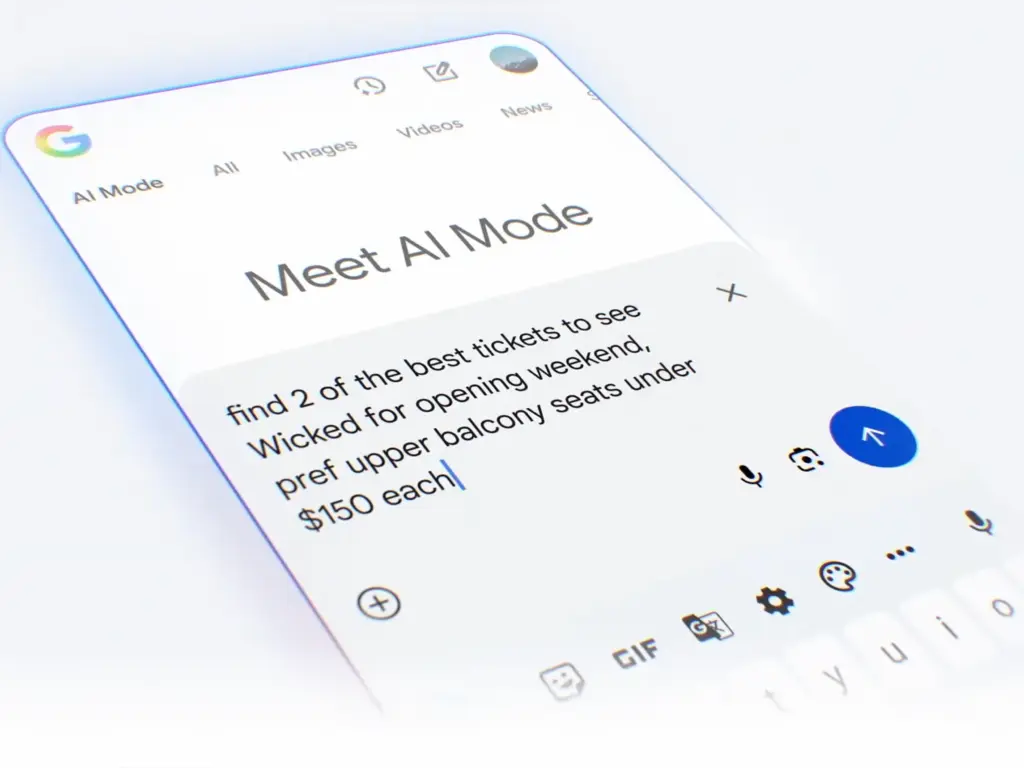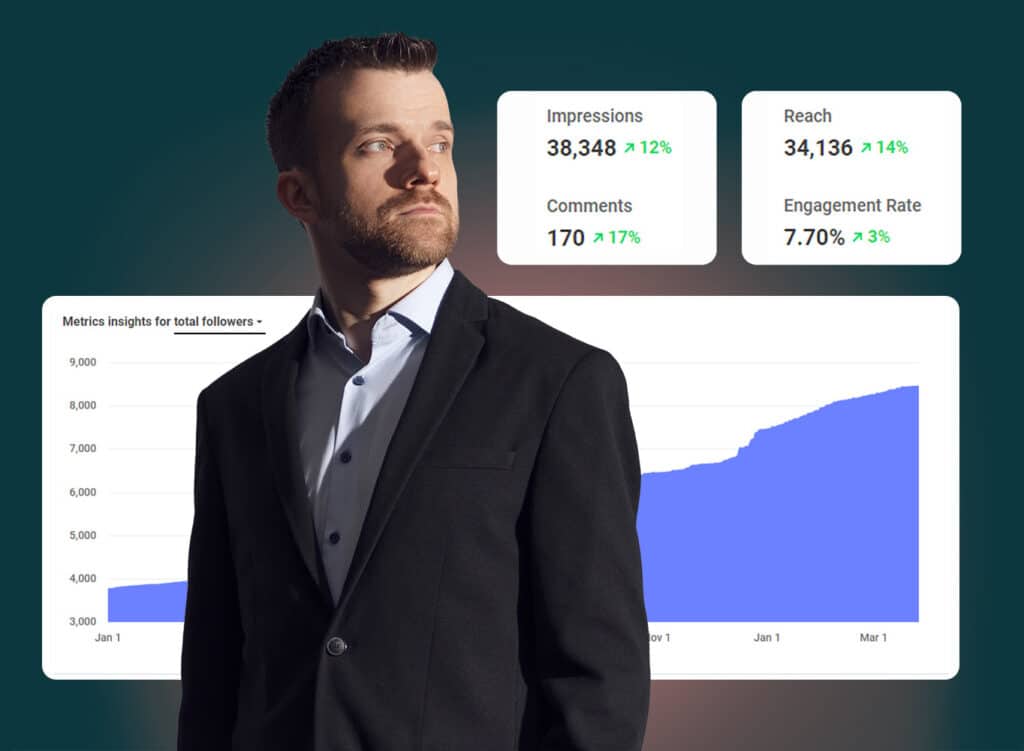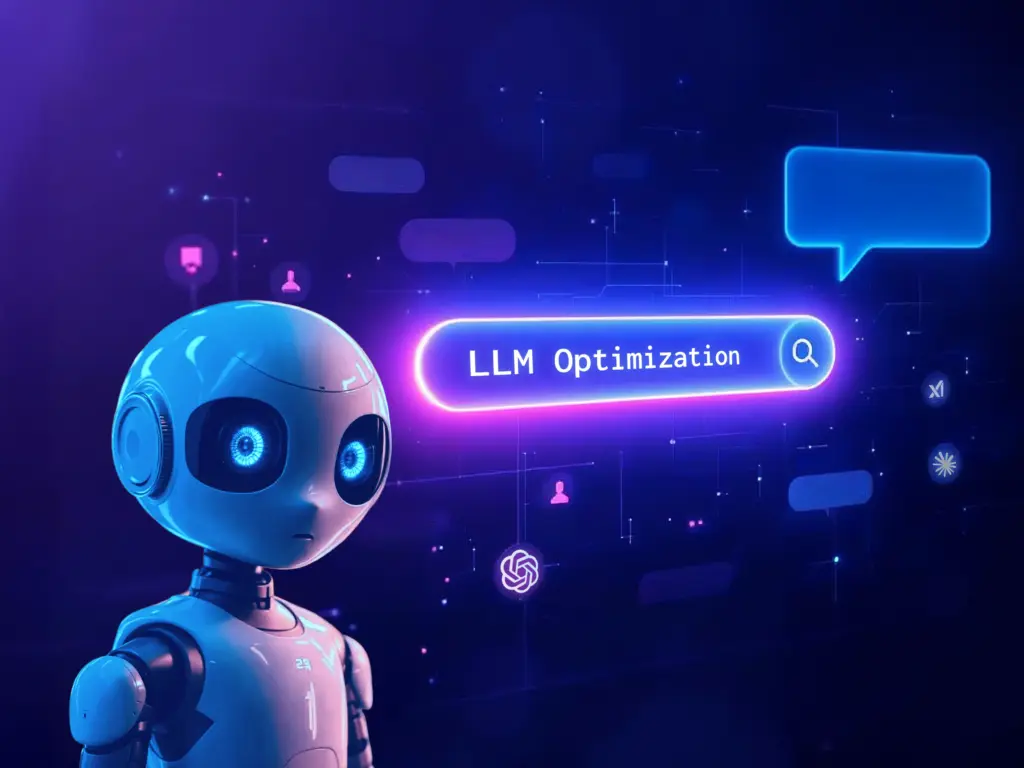Google’s launch of AI Mode in May 2025, powered by its advanced Gemini 2.5 model, has fundamentally altered the search landscape. For businesses and marketers relying on organic traffic to drive leads and customers, this shift from a traditional search engine to an AI-driven answer engine demands a strategic overhaul.
This blog post explores what Google AI Mode is, its impact on SEO and organic traffic, and five actionable strategies to help your business thrive in this new era.
- Google AI Mode revolutionizes search by delivering AI-generated answers on SERPs, reducing reliance on external sites and impacting organic traffic.
- Businesses must adapt to declining click-through rates and focus on conversion-driven KPIs to thrive in the new search landscape.
What Is Google AI Mode?
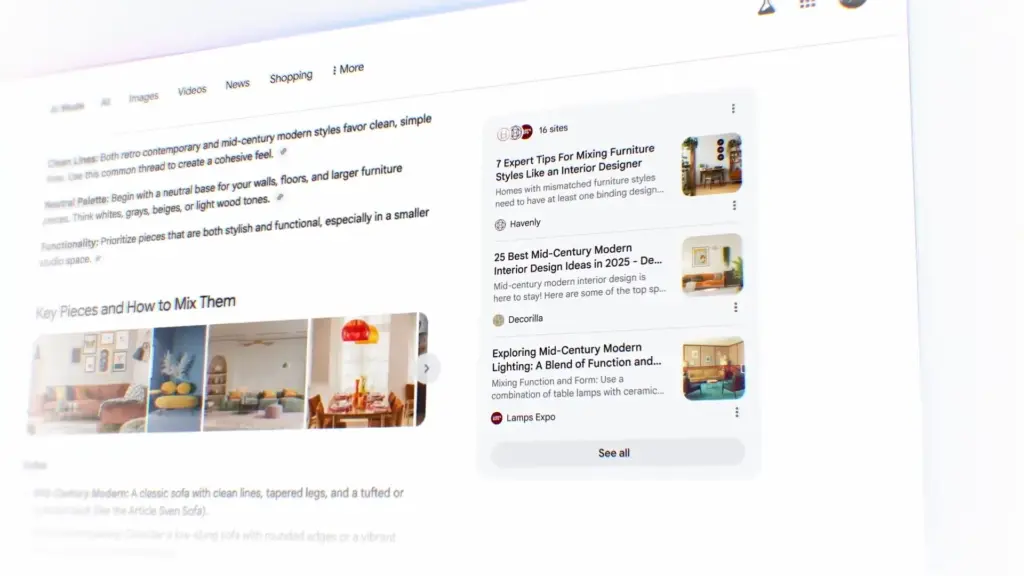
Google AI Mode is a conversational search feature that delivers concise, AI-generated answers directly on the search results page (SERP). Unlike the traditional 10 blue links, AI Mode often cites just three sources, prioritizing user retention within Google’s ecosystem. After extensive beta testing, its full rollout in May 2025 marks Google’s transformation into a closed-system answer engine, similar to platforms like ChatGPT or Grok.
For example, a search for “best running shoes” now provides a detailed summary, including product highlights, reviews, and purchase options, without requiring users to visit external sites. Follow-up queries like “best place to buy running shoes” or “reviews of Brooks Adrenaline” are answered instantly, further reducing clicks to blogs or listicles. This evolution challenges businesses dependent on organic traffic but offers opportunities for those who adapt strategically.
How Google AI Mode Impacts SEO and Organic Traffic
Google AI Mode reshapes the SEO landscape in several critical ways, particularly for businesses targeting organic leads and conversions. Here’s a detailed look at its effects:
1. Declining Click-Through Rates (CTR)
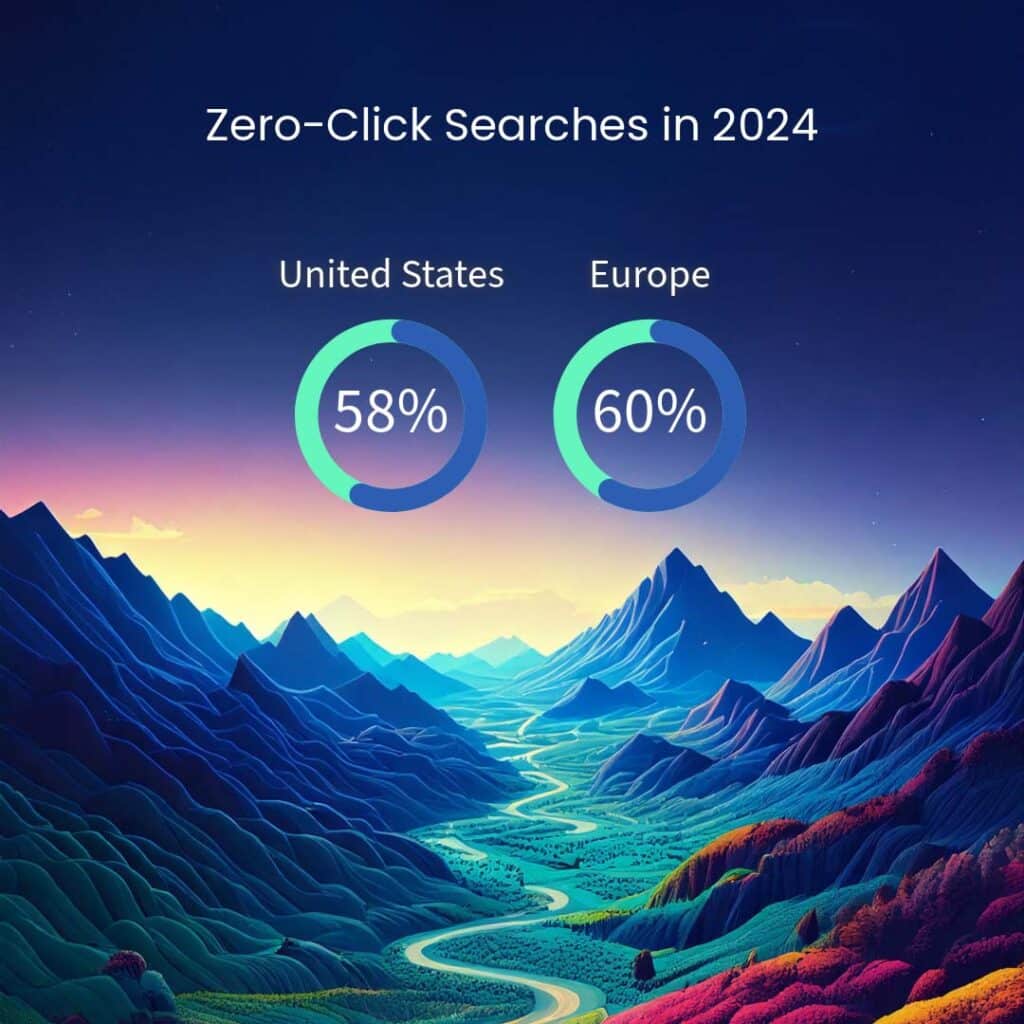
AI Mode’s comprehensive answers drive a surge in zero-click searches, where users find solutions without visiting websites. A 2024 study by Mail Online reported a 56.1% CTR drop on desktop and 48.2% on mobile when AI Overviews (AI Mode’s predecessor) appeared. AI Mode intensifies this trend, with estimates suggesting 60–70% of informational queries result in zero clicks.
2. Reduced Organic Visibility
Traditional search displayed 10 organic results, but AI Mode typically cites only three sources. This compression limits visibility, making it harder for websites to appear unless they’re highly authoritative. Media publishers and sites relying on top-of-funnel (TOFU) content, like “best product” listicles, face the steepest declines.
3. Local SEO Resilience
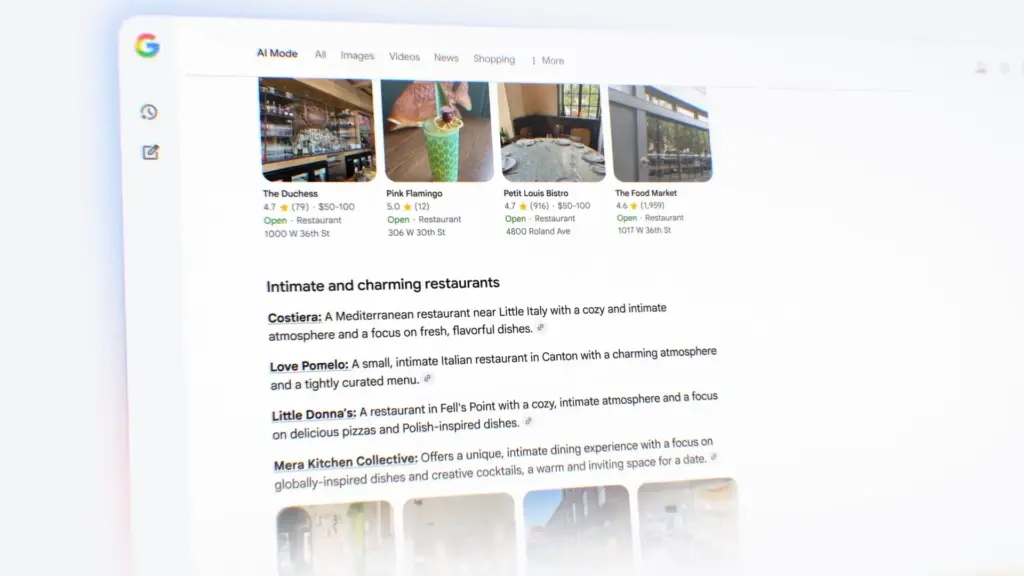
Local businesses are less affected, as AI Mode often pulls directly from Google Business Profiles and local packs. For instance, searching “plumber in Seattle” lists local providers immediately, bypassing aggregator sites. Optimizing your Google Business Profile is now essential for local visibility.
4. Challenges for Content Publishers
Websites built on informational content, such as guides or affiliate listicles, are seeing significant traffic drops. Users no longer need to click through when AI Mode delivers answers upfront, threatening affiliate marketers and content-driven sites.
5. Shifting KPIs
Traditional SEO metrics like organic traffic and SERP rankings are becoming less relevant. Businesses must focus on conversion-driven KPIs, such as leads, sales, and customer acquisition, to measure success in the AI Mode era.
Industry estimates suggest organic traffic could drop by 25–60% for affected queries. However, strategic adaptations can help businesses mitigate these losses and capitalize on new opportunities.
Why Google AI Mode Matters for Your Business
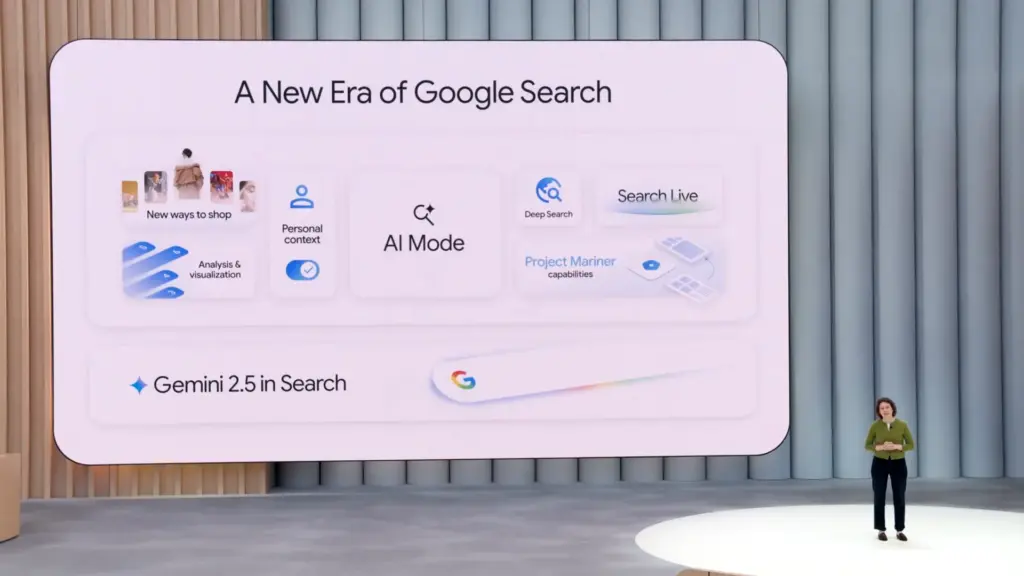
Google’s shift to AI Mode reflects its goal to keep users within its ecosystem, much like social platforms such as TikTok or Instagram. By functioning as a self-contained answer engine, Google reduces reliance on external websites, posing risks for businesses dependent on organic clicks:
- Traffic Loss: If your content isn’t cited in AI Mode’s limited slots, visibility plummets.
- Fewer Conversions: Reduced clicks mean fewer opportunities to engage prospects and drive sales.
- Analytics Challenges: AI Mode clicks often register as “Direct” or “Unknown” in tools like Google Analytics, complicating performance tracking.
Google’s Vice President of News Partnerships, Jaffer Zaidi, claims AI Mode drives higher-quality clicks, as users who visit sites are more engaged. While this may hold true, the lack of clear referral data makes it challenging to verify, pushing businesses to diversify their strategies.
5 Actionable Strategies to Optimize for Google AI Mode
To succeed in the AI Mode era, businesses must move beyond traditional SEO and adopt a multi-platform, topic-domination approach. Here are five actionable strategies to boost organic traffic and conversions in 2025:
1. Prioritize Quality Over Quantity
Generic, AI-generated content is easily outranked in the AI Mode era. Focus on creating unique, high-value content that showcases your expertise, experience, authoritativeness, and trustworthiness (E-E-A-T). For example, a SaaS company boosted conversions by 35% by publishing a detailed case study on “how our software increased ROI,” which ranked in AI Mode’s citations. Invest in proprietary research, expert interviews, or in-depth guides that AI can’t replicate.
Pro Tip: Audit your content for E-E-A-T compliance. Update outdated posts with fresh data, customer testimonials, or expert insights to signal authority.
2. Master Topic Domination
Instead of focusing solely on Google rankings, aim to dominate your niche across multiple platforms. For example, a fitness brand targeting “best home workout routines” should create content for YouTube, LinkedIn, Reddit, and TikTok. This builds brand authority and drives branded searches, which are more resilient to AI Mode’s impact. A fitness client saw a 25% increase in branded search volume after launching a YouTube series alongside blog content.
Pro Tip: Identify 3–5 core topics aligned with your audience’s needs. Develop a content calendar spanning blogs, videos, podcasts, and social posts to own these topics.
3. Optimize for AI-Driven Search
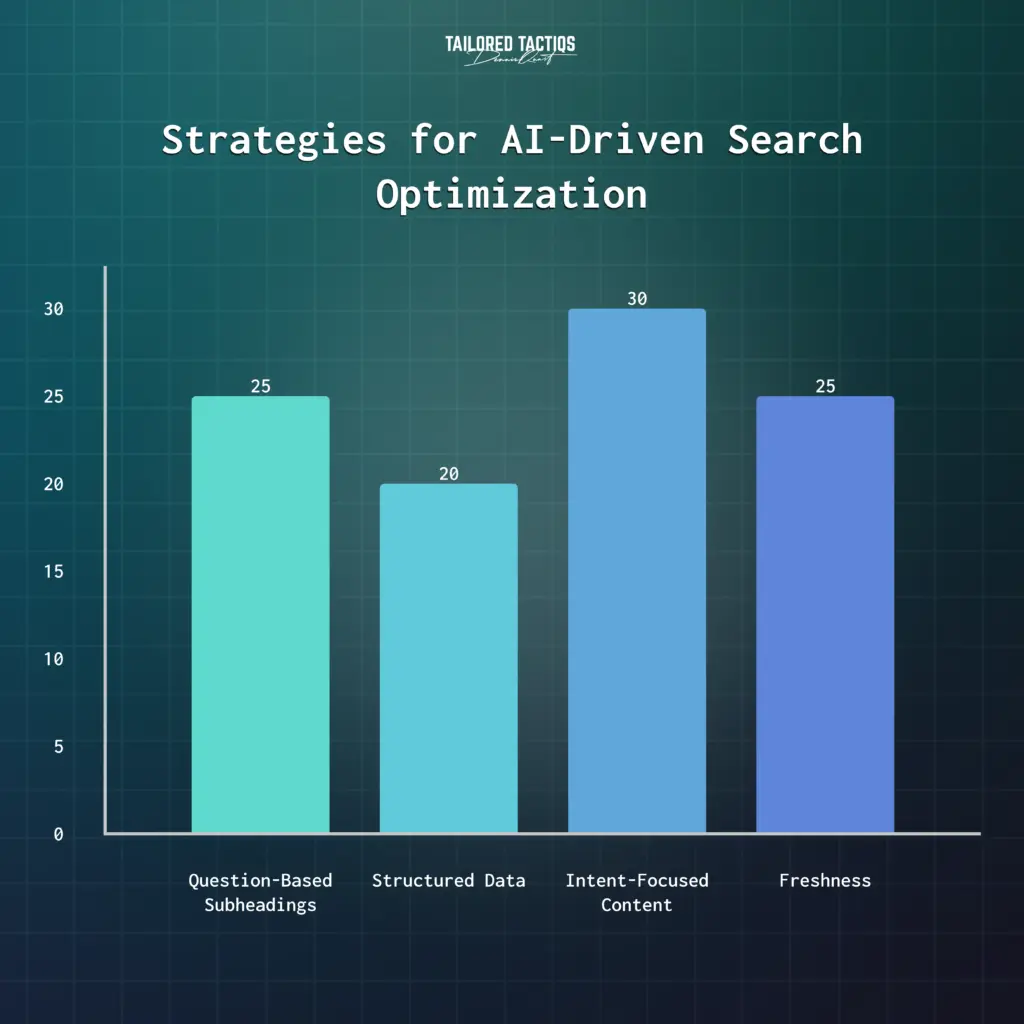
To increase your chances of being cited in AI Mode, structure your content for AI algorithms:
- Question-Based Subheadings: Use headings like “How Does Google AI Mode Affect SEO?” to match conversational queries.
- Structured Data: Implement schema markup (e.g., FAQPage, HowTo, or Product schemas) to help AI understand your content’s context.
- Intent-Focused Content: Target bottom-of-funnel (BOFU) and middle-of-funnel (MOFU) queries, such as “buy CRM software” or “best running shoes for flat feet,” which drive conversions.
- Freshness: Regularly update content to signal relevance. Data shows refreshed content ranks 15–20% higher in AI Mode citations.
Pro Tip: Use Google Search Console to identify keywords triggering AI Overviews and optimize for those terms with clear, concise answers.
4. Diversify Traffic Sources
Relying solely on Google is a risky strategy. Expand your presence on platforms like YouTube, TikTok, and email marketing to capture leads. For example, an e-commerce brand doubled email sign-ups by sharing product demos on TikTok, driving traffic back to their site. Social proof, such as customer reviews and case studies, also boosts credibility for AI Mode citations.
Pro Tip: Launch a YouTube channel or social media campaign targeting your core audience. Use analytics to track which platforms drive the most conversions.
5. Focus on Conversion-Driven KPIs
Shift from vanity metrics like organic traffic to measurable outcomes like leads, sales, and customer acquisition. For agencies, package services as a holistic digital marketing strategy, combining SEO, paid ads, and email campaigns. A client in the home services industry achieved a 30% ROI increase by integrating Google Ads with AI-optimized content.
Pro Tip: Set up goal tracking in Google Analytics to monitor conversions across channels. Regularly review KPIs to ensure alignment with business goals.
Case Study: Thriving in the AI Mode Era
Consider a local HVAC company in Seattle struggling with declining traffic due to AI Mode prioritizing local pack results. By optimizing their Google Business Profile with detailed service descriptions, customer reviews, and weekly posts, they secured a top spot in AI Mode’s local citations, boosting leads by 45%. They also launched a YouTube series on “DIY HVAC maintenance tips,” driving branded searches and increasing site traffic by 20%. This multi-platform approach demonstrates how topic domination and AI optimization deliver results.
Opportunities in the AI Mode Era
Google AI Mode presents challenges but also significant opportunities:
- Higher-Quality Traffic: Users clicking through AI Mode summaries are often high-intent, leading to conversion rates 10–20% higher than traditional organic traffic.
- Enhanced Authority: Being cited in AI Mode signals expertise, similar to a Featured Snippet, boosting brand credibility.
- Multi-Platform Growth: A strong presence across channels drives indirect traffic through branded searches and social engagement.
The Future of SEO: Your Path Forward
Google AI Mode is not a temporary shift—it’s the future of search. To stay competitive, businesses must:
- Create unique, E-E-A-T-compliant content that AI can’t replicate.
- Dominate core topics across platforms like YouTube, LinkedIn, and social media.
- Optimize for AI-driven search with structured data and intent-focused content. For deeper insights into optimizing for AI-powered systems like ChatGPT or Gemini, explore our guide on LLM Optimization: Mastering SEO for Large Language Models.
- Diversify traffic sources to reduce reliance on Google.
- Prioritize conversions over traffic volume.
As industry expert Neil Patel noted, “Brands that optimize for Google AI now will dominate.” Start by auditing your content for AI Mode compatibility, experimenting with multi-platform strategies, and tracking performance with tools like Google Search Console. The AI-driven search era is here—embrace it to stay ahead in 2025 and beyond.
